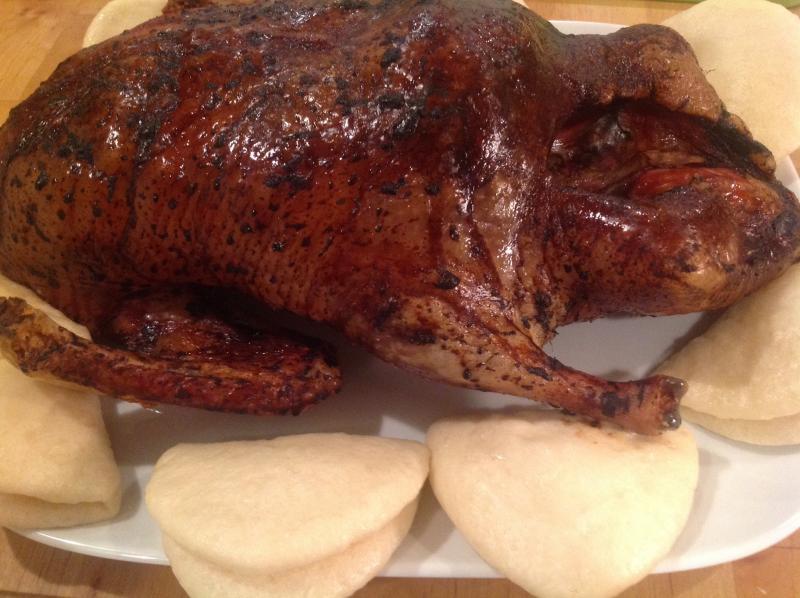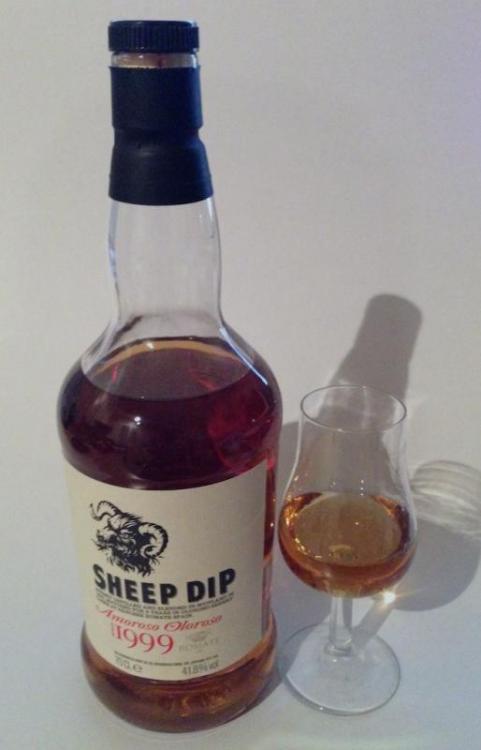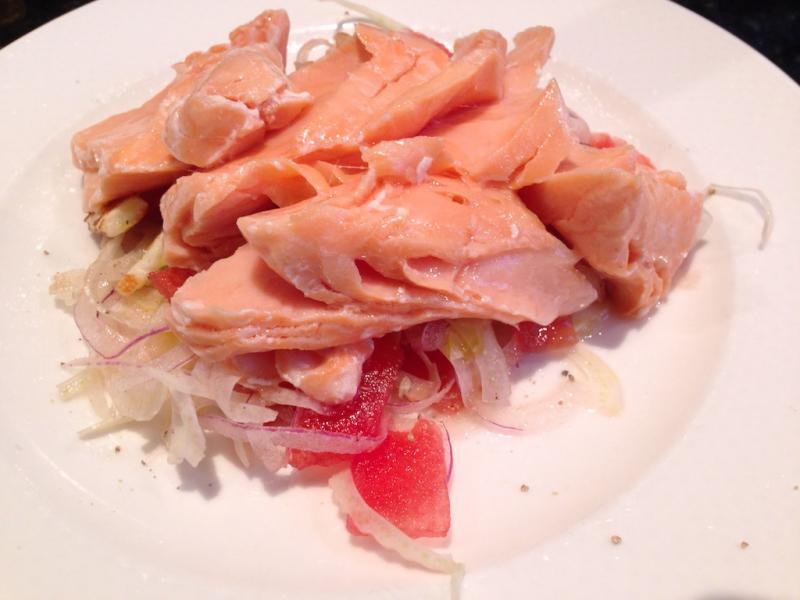-
Posts
2,606 -
Joined
-
Last visited
Content Type
Profiles
Forums
Store
Help Articles
Everything posted by nickrey
-
Probably the only thing you won't be able to find is Pademelon, which is a kind of small kangaroo. I'm Australian and I'd never heard of it either. The recipe says to substitute kangaroo but you could just as easily substitute venison for a very similar texture and flavour profile. The book has recipes from all around the world, including ones from Nathan Myhrvold, Wylie Dufresene, J. Kenji-Lopez-Alt, Brad Farmerie, and so on. I don't think you'd be either frustrated in not having availability of ingredients nor disappointed.
-
I suspect that this one would be much better than your supermarket one: at $3.95 for 75g, it works out at $10.53 for the amount you bought at essential ingredient for $25. Must be those vestal virgins picking the stuff that Chris Taylor was talking about up thread. By far the best place for herbs and spices is Herbies, as ChrisZ has said. Hands down.
-
Here's a few more: Salt Meats Cheese. It has Old Bay for those who want to try it. Lario fine foods for Italian foodstuff. Ball Mason Australia for Ball Mason jars and accessories. Butcher at home for butchering and sausage making supplies. Brookvale meats for Sydney meat deliveries (check out their spanish meat and grocery supplies). Richmond Hill Cafe and Larder for cheese. There's a few to go on with.
-
Like the David Jones fine-food hall, Simon Johnston used to fill a unique niche in the providore space in Australia. Because of their unique niche, they were able to charge premium prices. Now, however, knowing the availability of similar or better products from alternative sources one must wonder why anyone would shop there. Agreed that they are the sole agents for certain lines but, for example, if the Valhrona is too expensive buy some Amadei elsewhere. They are also the distributor for the Texturas range and if you want to get a real shock to the system, compare the Australian prices with those available for exactly the same product overseas. Yes there are shipping prices and possibly duties (but these are charged on landed price, not retail) but if I can buy the same item overseas with individual parcel postage significantly cheaper than I can buy it here, there is something wrong with their pricing model. I think Australians have been price gouged so much for so long that there is now an anti high-end sentiment arising even amongst the people who can afford it.
-
Dale's book is out. The link for it is here. It is A$69.95. The book is hardcover, 223 pages and covers sous vide cooking from basics up to some quite advanced restaurant dishes. After an introductory chapter on cooking with sous vide, he covers cooking of five different classes of food: eggs, poultry & game, meat, fish, and fruit & vegetables. From my experience, the times and temperatures given are appropriate and well within accepted safety guidelines. The basics are covered well and recipes are clear and concise. They are accompanied by pictures showing plating of the dishes. Dale is a trained and very experienced chef who moved into selling sous vide equipment after adopting it in his own kitchen many years ago. He has sourced recipes from 36 other chefs as well as presenting his own take on a number of dishes. This is possibly the first book to bridge the gap between a simple presentation of sous vide cooking (eg. Douglas Baldwin and Jason Lodgson's books) and the restaurant books that can verge into the complex. He does it well and the involvement of a range of chefs allows you to see their different approaches to using this cooking medium. I enjoyed browsing through the book and will use a number of techniques from the book in my own cooking.
-
Many thanks Martin for your hard work putting this together and improving it constantly.
-

Pronunciation of culinary/food-related terms: Why do it wrong?
nickrey replied to a topic in Food Traditions & Culture
To put some humour into the discussion: .But check out for a contrarian view. -
Let's hope Amazon CA don't have the same shipping dramas as they did with the original Modernist Cuisine. As I remember it the volumes got separated, slip cases went astray, etc, etc. Sorry I couldn't find the link to this discussion. The original topic seems to have disappeared into the electronic ether. Only part 3 can found by either in-forum or google searches.
-
What ratio of Trisol to flour did you use? I've seen 30:70, 40:60 and 50:50 referred to (trisol:flour). From memory (a variable and unreliable thing), it was 1:3 that I used and it worked well.
-

Most Important/Influential Chefs in Recent History?
nickrey replied to a topic in Food Traditions & Culture
This is an extremely US-centric list so far. Most of these haven't had as much impact on the global stage as they have locally. Totally agree with Ferran Adria as globally influential. The current global locavore passion seems to have a direct route back to Rene Redzipi. We also have a rash of dude food appearing around the world. David Chang possibly needs inclusion on the list, I'm sure US based correspondents can add other pioneers in this area. The list also wouldn't be complete without Michel Bras. Go to any fine dining restaurant today and you can see his influence in presentation. If you are doing a research paper, what I'd do is look at the key food trends that have emerged over time and then track back to the source. Examples could be codifying cooking (Escoffier), emergence of fusion food, locavore, slow food movement, nouvelle cuisine, modernist, etc. A paper looking at their emergence chronologically would be very useful as no advance appears without being influenced by what preceded it. -
This. It may help for people to have some references to work on if they are going to put opinions up about vacuum storage and botulism and about botulism and bad bugs in general. Here are a few. I've avoided source documents. These are summaries using the scientific data. CDC document on botulism in the USA. CDC surveillance data on botulism. National center for home food preservation article on garlic. If you want some bed-time reading, there is always the Bad Bug Book from FDA.
-
The wine should be fine for making a sauce. Just try it after making it and adjust to taste as you would with any sauce.
-
Be really, really careful about selectively quoting research that you cannot access in full and, moreover, which is unreplicated. They trained students to be "expert" tasters in a few hours. First huge red flag. They said that the cheese masked certain flavours and didn't mask others. Conclusion: cheese (like all food) interacts with wine. This is a trivial conclusion at most. Third, they concluded that the effects they find for a variety of wines and cheeses are so similar, that we should be able to enjoy almost any cheese with almost any wine. This is rubbish to anyone who drinks a variety of wine with cheese. It doesn't meet the reality check. It is possible therefore that something may be wrong with their research design and execution. See my earlier comment on replicability. Garbage in, garbage out. Please let's not perpetuate the conclusions of bad research. I'm a scientist and open to persuasion by research. This doesn't persuade me at all. I'm not criticising your own experience by the way. Taking your B all the way to concluding Z is, however, a problem.
-
For dessert with an Irish/Italian twist, you could do a variant on tiramisu called beeramisu.
-
Beer soup with cheddar. Make a roux thickened beer soup and add cheddar for extra oomph (or is that oom-pa-pah?)
-
Beer making is somewhat less forgiving than winemaking because you can always blend out the faults in wine; if you stuff up beer, it's gone. I suppose beer making is a bit more like pastry or baking; formulaic and less forgiving. Wine is more like cooking where you can mix to get the flavour you want. Anyone who says wine is not complex has a fairly high degree of ignorance on the number of grape varieties and the effects of terroir and climate on their expression, not to mention the effect of when the grapes are picked, how they are crushed, whether stems are left in, how long it is fermented and at what temperature, etc, etc. Then we get into types of oaks, time in barrel, and so on. There is also the impact of old versus new world techniques. I suppose someone who likes country and western could find opera all the same and not as rich and as diverse as their music. If you don't understand the language, the nuances, and the subtleties anything you don't know seems one dimensional. I'd like to think that growing up in a beer-making family I appreciate the subtleties of the craft and the product . I also drink a wide variety and have learnt a lot about wine over the years. They are equally complex and diverse. Anyone who says different is likely to have more experience in the one they propose is more complex than the other.
-
Definitly homognised milk yes. The curd was not very lumpy, but I strained it through a cheesecloth and the soft cheese firmed up good when I chilled it. Is it a problem making Mozerella from curd when the milk is homogenized? That was your problem Use non-homogenised milk and it will work.
-
Was the milk homogenised? If so, the fat globules are too dispersed to come together as a coherent curd. I think most people making cheese have done this once.
-
Cook it sous vide. There can't be any cooking smells as it's vacuum sealed throughout the entire cooking process.
-
-
Ok, it's a blend rather than a single malt but it's had such an interesting treatment and tastes so different, I thought I'd post it. I was buying some Romate Palo Cortado Sherry (which is delicious by the way) and came across this whisky: Sheep Dip Amoroso Oloroso. It was distilled and blended in Scotland in 1999 and matured in bourbon barrels for three years. It was then shipped to Spain and matured for nine years in Oloroso Sherry Casks at Sanchez Romate. It has a really chocolatey/caramel nose. The palate has heaps of vanilla and hints of stone fruit and spice with a really long dark treacle tart after-taste.
-
Salmon and Salad. Salmon was cooked sous vide 54C for fifteen minutes. Served flaked on salad comprising finely sliced fennel and onion combined with vacuum compressed watermelon, sliced thinly, and fried haloumi cheese. Dressed simply with salt, pepper, lemon juice, and extra virgin olive oil. Fish piece looks big but was only around 125g.
-
Is he in the next room playing live?





